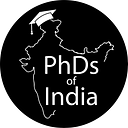Member-only story
Carving history
“It was my own and my father’s interest that led me to study ancient history. As a Bengali, it was like a custom to visit Puri quite often. In Standard XI, when I visited Jagannatha Temple, I saw something very heart-wrenching: the rear side of the temple wall, which had erotic sculptures, was plastered away because the local Brahmanical authorities deemed them as “obscene.” I knew then that I had to do something to change such a perception that concerned our rich cultural heritage and history.
My work revolved around iconography in the temples of early medieval Odisha from 600–1300 CE. I primarily focused on the feminine aspects portrayed in the Sanskrit texts during this period and corroborated these materials with the sculptural findings. A travel grant from ‘Indian Council of Historical Research’ helped me visit Odisha thrice for my fieldwork and proved to be very helpful.
However, I found that the condition of then-contemporary feminine society, their quasi-privileged and underprivileged lives, were shown in myriad ways. The lives of women, or lately called ‘Devadasis,’ were known from the Odishan temple walls as the Alasa Kanyas and Sanskrit texts. Though I wanted to showcase the social conditions of the women sculpted on these temple walls, I didn’t want to put my work into a capsule of femininity only.
